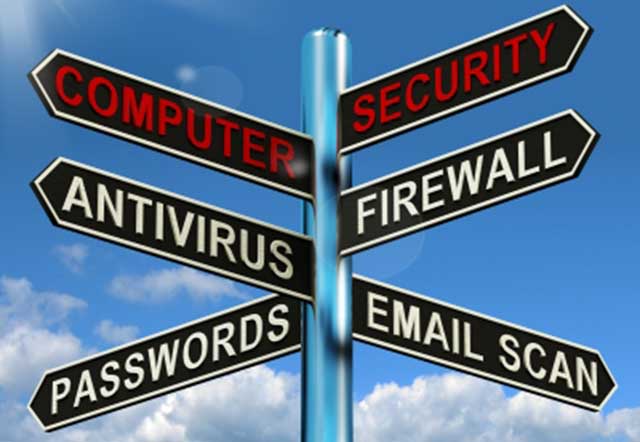Be careful about email attachments and unusual emails
Email is the number one way that viruses infect computers.
Never click on a link or open an email attachment if you are not sure it came from a trusted source. Some email software like Outlook and Thunderbird allow you to set a default to always display images when they are in an email. It is better to disable this so that you can decide if it is safe to open an attached file.

Some file attachments might have a double extension, such as the file “picture.jpeg.exe”. Windows often hides common file extensions so might show this file as “picture” or “picture.jpeg”, but not “picture.jpeg.exe”. The problem with “picture.jpeg.exe” is that it isn’t a JPEG picture file but a program – that’s what the “.exe” extension means. Hidden this way, it is very likely to be a malicious program with unforeseen consequences if you try to open it (that means run it for .exe files). You may be better off by changing Windows to show full file names to avoid having hidden extensions. In Windows 7, open Windows Explorer, click on Tools | Folder options…, then click on the View tab and ensure the check box is clear by the option Hide extensions for known file types.
If you get an email from a company you regularly deal with, but the email requests confidential information or for you to run a program attached to the email, be careful! Open email is NOT the best way to exchange confidential information, so it would be a good idea to phone the person who sent the email to question their motives. It is wise NEVER to run a program sent via email unless you are sure of its origin and you were expecting it.
Use USB drives with extreme caution
In a recent test in London, UK, about ten USB drives were deliberately placed on the ground around the City, where many financial institutions exist. Researchers were astounded by how many were placed into computer USB drives – they knew this as doing that ran software on the USB drive which notified the researchers that this had been done. It seems that most finders could not resist trying to discover if the USB drives had valuable and/or interesting data on them. If you found a USB drive on the street, or on somebody’s desk, would you be tempted to look into it? Unfortunately, not all of these drives are deposited by harmless researchers. They could WELL contain malicious virus software.
Beware of internet popups
Some websites use popups to show adverts or enlarged versions of pictures on their pages. Others display a popup that pretends to be a standard Windows error message. If you click on one of THOSE popups, you might install a virus onto your computer. So BE CAREFUL! Some popups report an error that can be fixed if you buy and install their troubleshooting software. DON’T DO THAT! Some rogue browser apps can hide virus code in the browser’s cache, so it is a good idea to clear the cache regularly.
Install antivirus software
It may seem strange to put this at number four, but it is still vital. A good package such as Norton, McAfee or Sophos will bring a high level of protection. These programs rely upon regular updates to their virus definitions to catch new ones as they appear, and it is important to run a full antivirus scan each week to keep your computer clean.
Install a firewall
Windows comes with a standard firewall, called Windows Firewall (no surprise there). Some antivirus programs, such as Norton 360, come with an advanced firewall program which is preferable to the default Windows one. A firewall stops almost all malicious attempts to hack into your computer. In a recent test, it was found that computers with no firewall were infected with a virus within five minutes of being connected to the Internet.
Elicia Robert is an IT trainer and teaching in an institute in Melbourne name Logitrain. Logitrain is providing IT training with job guarantee in Australia. If you need more information read logitrain reviews.
Tips to Avoid Computer Viruses,


Stephan
Dec 18. 2013
Nice tips that you provide here
Use USB drives with extreme caution is very important step. even you have firewall but you have to be aware of unknown USB or suspicious one. Scan them before use.
Thanks for your sharing
Stephan
Harshil
Jan 10. 2014
These are useful tips really. You must be scanning every file.
perth
Jun 10. 2014
This was a really nice post.
Tawanna
Jul 18. 2014
I see a lot of interesting posts on your blog.
You have to spend a lot of time writing, i know how
to save you a lot of time, there is a tool that creates unique, SEO friendly posts in couple of seconds, just type in google – k2 unlimited content
TechCrates
Nov 07. 2017
Hi,
Thanks for this informative Guide which really helpful to get protection from virus infection….!!